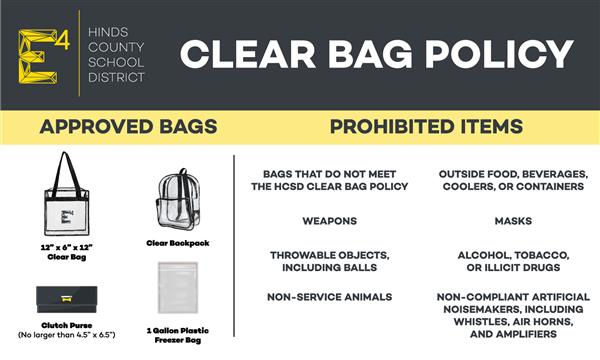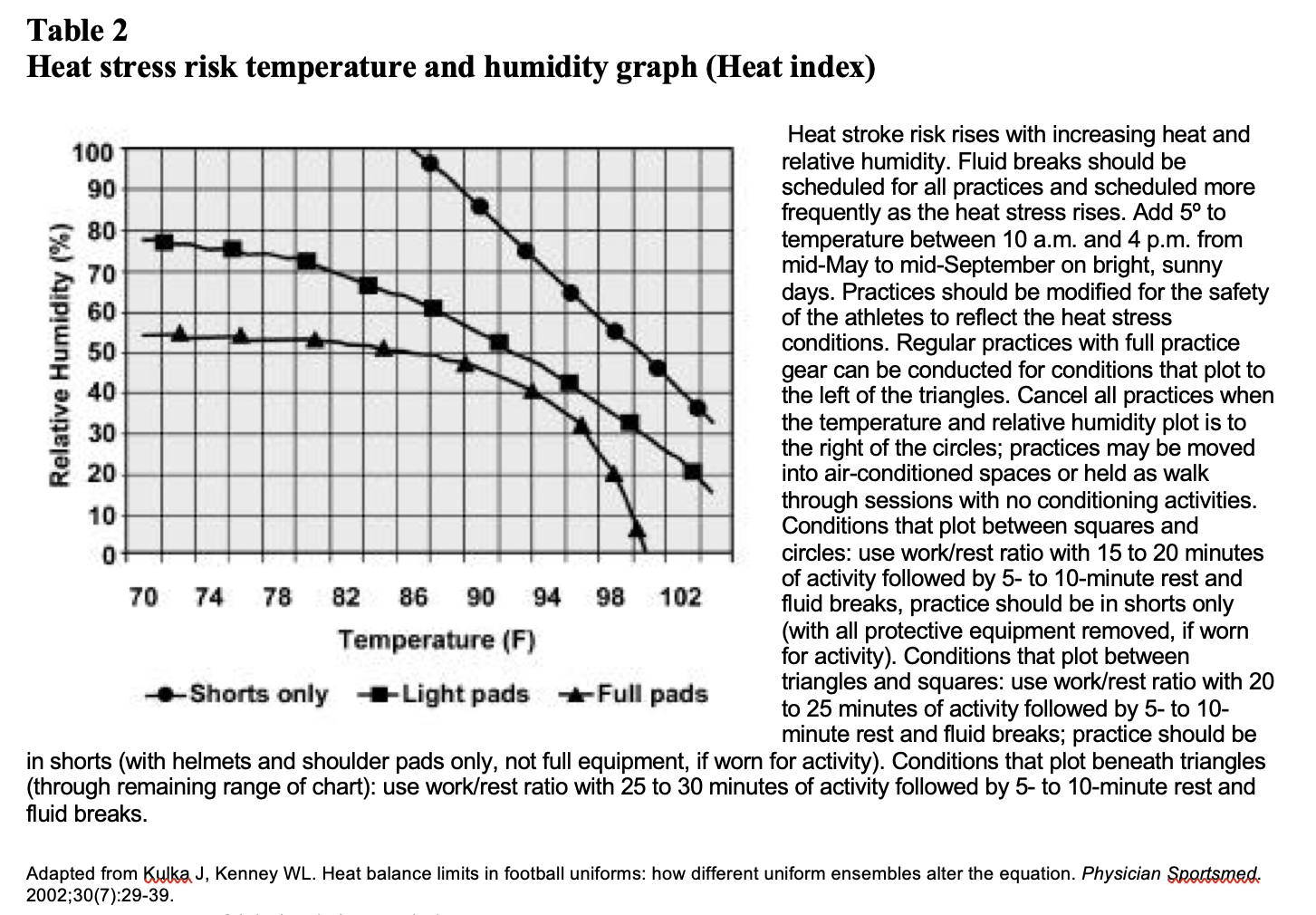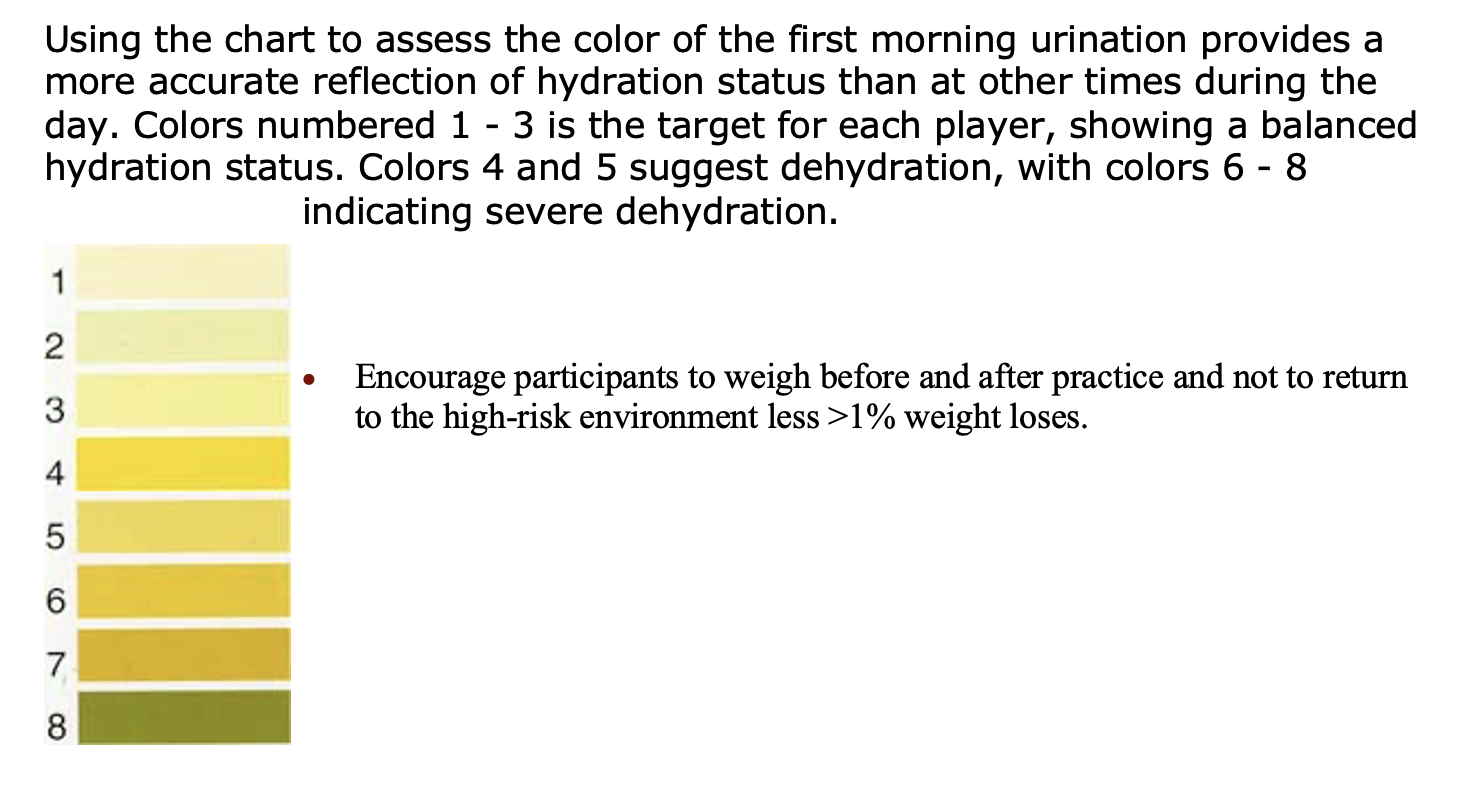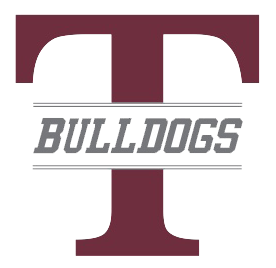
Athletic Ticket Pricing
Ticket Pricing For Regular Season Events
$8 per person
$10 per person for Varsity Football only
HCSD District Passes, MHSAA State Coaching Passes, and MHSAA State Officials Passes are accepted at regular season events.
*****Ticket Pricing for Playoffs is different from regular season. Only MHSAA State Coaching Passes and MHSAA State Officials Passes are accepted at Playoff Events.*****
Parent/Coach Relationship
Both parenting and coaching are both extremely difficult vocations. By establishing an understanding of each position, we are better able to accept the actions of the other and provide greater benefit to children. As parents, when your children become involved in our program, you have a right to understand what expectations are placed on your child. This begins with clear communication from our student-athletes coach.
Communication you should expect from the coach
Philosophy of the coach.
Expectations the coach has for your student as well as all the players on the squad.
Locations and times of all practices and contests.
Team requirements, e.g., fees, special equipment, off-season expectations.
Procedure to follow should your student be injured during participation.
Discipline that results in the denial of your child’s participation.
The availability of the coach to speak with your student if they have a problem.
Communication coaches expect from parents
Concern expressed directly, at appropriate times, to the coach.
Notification of any schedule conflicts which involve absence from practices or contests well in advance.
Your support for the program that your student has chosen to participate in and positive encouragement for all involved.
As your student-athletes become involved in the athletic teams, they will experience some of the most rewarding moments of their lives. It is also important to understand that there will also be times when things do not go the way your student wishes. This is the time when your student should talk to his/her coach. This type of communication will help give both coach and athlete a better understanding of each other’s ideas and goals.
Appropriate concerns to discuss with coaches
Suggested ways to help your student athlete improve.
Concerns about your student-athlete’s behavior and/or academic progress.
It is very difficult to accept that your student athlete may not play as much as you may have hoped. Our coaches are experienced, professional educators. They are required to make judgment decisions based upon evaluation of practice performance and what they believe to be in the best interest of all those involved in their programs. As you have read from the list above, certain things can be and should be discussed with your student-athlete’s coach. Other items, such as the following, must be left to the discretion of the coach:
Issues not appropriate to discuss with coaches
Playing time
Team Strategy
Play calling
Other student-athletes
Procedure to follow if you have a concern to discuss with a coach
Have your student-athlete meet with his/her coach to discuss an issue. (On most occasions, this coach-to-athlete meeting can resolve issues or questions.)
Call the coach directly to discuss your concerns. Call your child's school and leave a message with the secretary. Please DO NOT attempt to confront a coach before or after a contest or practice. These can be emotional times for both the parents and the coach. Meetings of this nature do not promote resolution.
What can a parent do if the coach-athlete and parent-coach meeting did not provide satisfactory resolution
Call and set up an appointment with the Principal, Athletic Director and the coach to discuss the situation. At this meeting, issues of concern will be discussed and an appropriate plan of action developed.
The value of co-curricular activities relating to future success
Research indicates that students involved in co–curricular activities have a greater chance for success during adulthood. Many of the positive character traits required to be a successful participant in athletics are exactly those that will promote a successful life after high school. The information provided here is designed to make your student-athlete’s experience enjoyable and beneficial.
HCSD Clear Bag Policy

In the interest of enhancing existing security measures at athletic events hosted by the Hinds County School District, the Athletic Department will implement a new security policy regulating the the type of bag that may be carried into sports venues beginning with the 2018 winter sports season.
Fans are encouraged not to bring any types of bags inside HCSD athletic facilities during games; however, the following outlines bags that are permitted:
· Bags that are clear plastic, vinyl or PVC and do not exceed 12" x 6" x 12";
· One-gallon clear plastic freezer bags (Ziploc bag or similar); and
· Small clutch bags, with or without a handle or strap, that do not exceed 4.5" x 6.5" (approximately the size of a hand).
· An exception will be made for medically necessary items after proper inspection at a gate designated for this purpose.
Prohibited bags include, but are not limited to: purses larger than a clutch bag; briefcases; backpacks, cinch bags, and fanny packs that are not clear and/or exceed the size restriction; luggage of any kind; computer bags/cases; camera bags/cases; binocular bags/cases or any bag larger than the permissible size.
Fans will continue to be able to carry items allowed into athletic venue in a permissible clear bag, such as binoculars and cameras.
Frequently Asked Questions
How does the new policy improve public safety?
The clear bag is easily searched and significantly reduces faulty bag searches. It also supports the Department of Homeland Security's "If You See Something, Say Something" campaign.
Do I have to put everything I'm carrying into the permissible bags?
No. Fans are limited only to the type of bags carried into athletic venues, not items that they may normally bring to a game that fit in pockets or clutch bags (e.g., keys, makeup, feminine products, comb, phone, wallet, credit cards). Fans may carry a blanket over their arms, and binoculars and/or camera around their necks or in their hands without the case. Fans may also use the clear bag and clutch to carry these items and other permissible items. Every member of the family may carry in a permissible bag.
What about diaper bags?
Diapers and non-medically necessary items for babies and young children must be carried in a clear bag. Each member of a family, including children, would be allowed to carry an approved clear bag and a clutch purse into athletic venues.
How many bags may each person bring into the sporting venue?
One large clear bag - either a one-gallon Ziploc style bag or the 12" x 6" x 12" clear bag - plus a small clutch that does not exceed 4.5" x 6.5". The small clutch allows privacy for small personal items and also is easily searched.
May fans carry cameras, binoculars, smart phones or tablets separately from what they put in a clear bag?
Yes. A phone, binoculars or cameras may be carried into the facility as long as it is not in its own bag.
What about bringing blankets in cold weather?
Fans will be able to bring blankets by tossing them over a shoulder or arm.
If I have certain items that I need to bring into the athletic facility for medical reasons and they won't fit in the clear bag, what do I do?
There will be designated entrances to allow screening of these bags and medically necessary items.
Are all purses prohibited?
No. Small clutch purses, with or without a handle or strap, that do not exceed 4.5" x 6.5" are permitted along with either the 12" x 6" x 12" clear tote bag or the one-gallon freezer bag. Fans are encouraged not to bring any bags, but the policy has been created to balance fan needs with improved public safety and convenience.
Does this bag policy apply to credentialed individuals (e.g., media, staff)?
There will be an exception specifically for "credentialed" individuals who bring bags that do not meet the policy guidelines. However, their bags will still be searched prior to entry, and only bags that pass the inspection will be allowed into the stadium.
Emergency, Evacuation, and Security Action Plan (EESAP)
Purpose:
The purpose of the EESAP is to provide Terry High School Athletics with an action plan in case a serious or life-threatening condition arises during practice or competitions; the plan includes actions for keeping fans, players, coaches, and all others involved safe during inclement weather; and the plan provides an intentional plan of proactive steps to create an environment that is safe and promotes good sportsmanship. The athletic coaches, trainer, faculty, and administration must constantly be on guard for potential injuries, and although the occurrence of limb-threatening and life-threatening emergencies is not common, the potential exists. Therefore, proactive procedures for safety, inclement weather, and emergencies must be prepared for a timely and orderly response to potentially dangerous and life-threatening circumstances.
Emergency Contacts:
Fixed phones are not available outside school buildings. In the instance that an incident occurs, you will immediately report to the Administration, Athletic Director, School Resource Officer, Sheriff Deputy, and/or Terry High School Faculty at the event. They will get in contact with the appropriate emergency personnel needed for the incident. An emergency contact phone list will be provided for to all administrators, faculty, and deputies at the event.
· Ambulance, Fire, and Police – 911
· American Association of Poison Control Centers – 1-800-222-1222
Information to be provided over the phone in case of emergency:
1. Your name and phone number you are calling from
2. Exact location of emergency and directions (street names, buildings, landmarks, entry into the building, specific areas, etc.)
3. Type of injury, illness, and/or incident
4. Condition of patient(s) and type of aid being provided
5. Number of people injured
6. Other information that is requested
7. Be the last one to hang up
The Athletic Trainer, Administration, and/or Deputies will make the decision to call EMS and will personally make the call or they may directly assign a responsible person to call. Local EMS should also have directions and specific entry points to aid in the response of the emergency.
Chain of Command:
The Athletic Trainer is in charge of the emergency until EMS arrives. Doctors will assist if summoned by the Athletic Trainer. Administration and/or Coaches should be available to assist if the Athletic Trainer requests their assistance. When an Athletic Trainer is not available, the Administration and Coaches are in charge until an Approved Medical Professional or EMS arrives.
Emergency Qualifications:
It is required that all Athletic Trainers and Coaches are trained in CPR and First Aid. New staff should comply to the rule within six months of being hired. It is also recommended that all personnel also be trained in the prevention of disease transmission. Visiting teams should be informed of EESAP procedures.
EAP Training and Personnel:
The EESAP procedures should be taught to all that participate in the administration of school events. Gate workers and deputies should have a card of all the administrators working the event. The gate workers should also be able to contact the deputies throughout the night. Either hand-held radios or cell phones should be used at the event.
Responsibilities of Emergency Team Members:
If a parent is not present at the event, a faculty member must be responsible until emergency personnel arrives. The responsible faculty member of Terry High School will be responsible for contacting the parent and communicating with the parent until all arrangements are made. Since insurance coverage varies among athletes, parents may decide how their athlete is cared for and where they are cared for. Parents are the primary person to accompany the athlete to the hospital.
Equipment and Supplies:
Basic first aid supplies will be available at all events. The Athletic Trainer will have necessary equipment and supplies at the event, as well. An Automated External Defibrillator (AED) will be available at all home athletic events. Head Coaches are responsible for providing a basic first aid kit. Medical forms and parent contact information should be available at all contests whether home or away.
The minimum requirements for a basic first aid kit includes:
· Various size band-aids
· Athletic tape
· 4x4 Gauze pads
· Antibiotic ointment
· Hydrogen peroxide
· Non-latex medical gloves
· Medical scissors
· Bodily fluid absorption
Environmental Conditions:
In case of lightning, the referee or administration is responsible for the decision to stop the contest. The administrator is responsible for having a lightning detection device or app at all outdoor contests. If a game is stopped due to lightning, all spectators should return to their cars and await further instructions. All players, coaches, and staff should return to appropriate locker rooms. The administration and referee will maintain communication while monitoring the weather situation.
Weather can be cold or hot in our area, and symptoms are listed at the end of this document for both heat and cold injuries. The MHSAA has information about lightning policies and heat illness policies. The links for these two documents can be found on the Terry High School football webpage. Reference the heat related illnesses documents for determining attire, extent of practices, prevention, and treatment of heat injuries and illnesses.
In the case of a fire, everyone inside the building will calmly proceed to the nearest exit and remain outside and away from the building. The Administrator or who they directly instruct should call 911 to inform them of the situation. In case of an earthquake, everyone inside will immediately drop, cover, and hold on. If necessary, move only a few steps to the nearby safe place avoiding windows. If you are indoors, expect the fire alarms and even the sprinklers to activate during the earthquake. Stay indoors until the shaking stops, and you’re sure that it is safe to exit. If you are outdoors, find a clear spot away from buildings, trees, and powerlines and drop to the ground. Once the shaking stops, check yourself and others for injuries. Expect aftershocks and each time that you feel one, drop, cover, and hold on. Get everyone out of a building that is unsafe. Someone should also call 911 to inform them of the situation. You cannot assume that administration, coaches, faculty, and deputies are in a position to call.
In case of a tornado warning while indoor. Administration, coaches, deputies, and faculty should escort all spectators and players to the two main halls within the school away from windows and if more space is needed quickly make space in the B building if it can be done safely based on conditions. Everyone should drop and cover to protect from falling and/or flying debris. Everyone should stay inside after the tornado has passed until emergency personnel has declared that the environment is safe. If the building has become unsafe due to damage, carefully move to a safer location after the tornado has passed.
In case of a tornado warning while at the football field. Deputies should escort the visiting spectators to the old fieldhouse. The spectators should drop and cover away from windows. The administration should escort the home spectators to the vacant locker rooms and corridors of the athletic field house. The coaches for the home and visiting team should escort their players to their locker rooms.
In case of a tornado warning at the softball and baseball complexes. Deputies and administration should escort both visitor and home spectators to all available spaces inside the athletic field house. The spectators should drop and cover away from windows. The baseball coaches for the home and visiting teams should escort players to the baseball and boys’ soccer locker rooms. The players should drop and cover away from windows. The softball coaches for the home and visiting teams should escort the players to the softball and girls’ soccer locker rooms. The players should drop and cover away from windows.
Procedures for Various Sport Locations at Terry High School:
Main Gym – Boys/Girls Basketball/ Girls Volleyball
In case of emergency a cell phone at the court will be used by the athletic trainer or coach to call EMS. The athletic trainer or coach will give directions for EMS to the main gym (GYM on map) at Terry High School, if necessary. The school is located at 235 West Beasley Rd, Terry, MS 39170. The administrator will assign a person to meet EMS at gate 2 on West Beasley to direct them to the south entrance of the gymnasium. The main gym entrance is located through the band building gate, down the side walk and to the left. The administration will be responsible for crowd control and coordinating police if necessary. The head coach will remain with the team as deemed necessary. In the event life flight is needed. The helicopter will land in the teacher parking lot (which will need to be blocked off with barricades).
Landing Coordinates for Teacher Parking
32°05'38.2"N 90°18'09.7"W
Football Field - Football, Soccer, Track, and Cross Country
In case of emergency a cell phone at the field will be used by the athletic trainer or coach to call EMS. The athletic trainer or coach will give directions for EMS to the football field (Football on map) at Terry High School, if necessary. The school is located at 235 West Beasley Rd, Terry, MS 39170. The administrator will assign a person to meet EMS at the main double gate between the baseball field and football field home entrance off the SE Frontage Rd. to direct them to the east entrance of the football field. The administration will be responsible for crowd control and coordinating police if necessary. The head coach will remain with the team as deemed necessary. In the event life flight is needed. The helicopter will land on the football practice field.
Landing Coordinates for Football Practice Field
32°05'51.1"N 90°18'01.2"W
Softball / Baseball Field-
In case of emergency a cell phone at the field will be used by the athletic trainer or coach to call EMS. The athletic trainer or coach will give directions for EMS to the baseball or softball field (Baseball/Softball on map) at Terry High School, if necessary. The school is located at 235 West Beasley Rd, Terry, MS 39170. The administrator will assign a person to meet EMS at the main double gate between the baseball field and football field home entrance off the SE Frontage Rd. to direct them to the baseball or softball fiedl. The administration will be responsible for crowd control and coordinating police if necessary. The head coach will remain with the team as deemed necessary. In the event life flight is needed. The helicopter will land on the football practice field.
Landing Coordinates for Football Practice Field
32°05'51.1"N 90°18'01.2"W
All incidents should be documented and kept in a secure office!
Documentation should include the following:
1. Documentation of response and actions during emergency situation
2. Follow-up documentation on evaluation of response to emergency situation
3. Documentation of personnel training and rehearsals
Emergency Care:
Apply basic emergency care as situation requires. Care might include:
Check life threatening conditions
Level of consciousness – if unconscious call 911 immediately
Airway – is airway blocked
Breathing – is person breathing
Circulation – does person have pulse
Bleeding – is person bleeding severely
Call 911 now if necessary
Emergency equipment
AED, first aid kit
Apply basic first aid as situation requires
Adult CPR: 30 compressions then every 2 breaths
Bleeding: direct pressure over injury; elevate injury over heart if possible; apply sterile dressing over injury
Splint fractures
Cervical Collar – apply if suspected neck injury; prevent any movement of neck when applying cervical collar
Spine Boarding – use if suspected head, neck or spine injury; prevent any movement of spine while attaching to spine board
Treat for Shock – if necessary
Any other emergency procedures as necessary
Other things to consider during emergency situation:
Reassure and calm athlete
Don’t move severely injured athlete unless he/she is in danger
Don’t reduce fractures or dislocations
Sufficient lines of vision between the medical staff and all available emergency personnel should be established and maintained
Once the medical staff begins to work on an injured player, they should be allowed to perform services without interruption or interference
Keep players, coaches, spectators away and prevent them from helping injured athlete
Heat Injuries
▪Heat Cramps – dehydration, thirst, sweating, muscle cramps, fatigue
▪Heat Syncope (fainting) – dehydration, fatigue, tunnel vision, pale or sweaty skin, decreased pulse rate, dizziness, lightheadedness, fainting
▪Heat exhaustion - normal or elevated temperature, dehydration, dizziness, lightheadedness, fainting, headache, nausea, diarrhea, decreased urine output, persistent muscle cramps, pale skin, profuse sweating, chills, cool/clammy skin, intestinal cramps, urge to defecate, weakness, hyperventilation
▪Heat stroke - high body-core temperature, central nervous system changes, dizziness, drowsiness, irrational behavior, confusion, irritability, emotional instability, hysteria, apathy, aggressiveness, delirium, disorientation, staggering, seizures, loss of consciousness, coma, dehydration, weakness, hot and wet or dry skin, fast heart beat, low blood pressure, hyperventilation, vomiting, diarrhea; cool athlete immediately in any way possible, can lead to death
Cold Injuries
▪Frostnip – white/waxy skin, numbness; typically cheeks, earlobes, fingers, and toes
▪Frostbite – white skin, “wooden” feel to affected area, numbness, possible anesthesia; warm slowly, no rubbing
▪Hypothermia – shivering, loss of function, slurred speech, dazed, irrational behavior, pale skin, dilated pupils, decreased pulse.
MHSAA Security Procedures
BEFORE THE GAME:
1. Discuss with the student body in an assembly the need for exhibiting good sportsmanship to visitors. A sportsmanship campaign is required for the beginning of each school year and should be continued throughout the school year. A concern at the present time is the behavior of many of our adult fans. A school may feel it necessary to send home to parents and other adults in their community, information concerning good sportsmanship. (This is strongly recommended by the MHSAA.) This should include the proper courtesies shown to out-of-town guests and game officials. Fans need to understand the penalties imposed for their misbehavior, including being banned from future contests.
2. Provide necessary game information to visiting schools. Include game time, directions to the game site and parking, location of ticket booths, seating arrangements and ticket prices.
3. Provide adequate police supervision for major sports and playoff contests. Police should be visible inside and outside the stadium. (Submit to the MHSAA a chart indicating their physical location before, during and after the game for the sports of football and basketball. Ensure that you have adequate security in areas that you know could be trouble spots.)
4. Provide protection and courtesy to game officials. A. Arrange for a school representative to meet the officials and have a special room where the officials can have their pre-game conference. B. Provide escort on and off the field or court. C. Ensure that officials are treated well after the game and escorted to their car or have a place of safety as soon as the contest is over.
5. The game announcer should read the statements on sportsmanship, alcohol and drug use, as well as on throwing objects and unruly behavior. (MHSAA Sports Information Manual, page 16.) Artificial noise-makers should not be used in gymnasiums. Air horns are not permitted at any MHSAA event. Any of these violations will lead to expulsion from the game, and could lead to being banned from all future contests.
6. Whenever possible, provide special seating for students, bands, adults and visitors. Student bodies should be kept separated at ALL times.
7. Provide supervised parking. A special supervised area should be provided for buses of visiting teams. (Use of service clubs or youth organizations is suggested. This will free your law enforcement officials to be in other possible trouble areas.)
8. All supervising personnel and “on duty” faculty members should be identified (special T-shirts, arm bands, caps, etc.).
9. A manager’s conference should be held thirty minutes prior to a varsity contest in the sports of football, softball, basketball, soccer, and baseball. The game administrator is required to conduct a pre-game meeting with game officials, both head coaches, and security. A game manager’s conference needs to be held prior to all sporting playoff contests, including all major sports, as well as minor sports (such as volleyball, swimming, etc.)
DURING THE GAME:
1. Personnel should be stationed in key areas. They should remain at their station throughout the contest and after the game until the areas have cleared.
2. The visiting school’s administration or principal’s designee should supervise their students and fans. The host school should also supervise the visiting side and provide assistance to visitors. They should also prevent students from crossing to the opponent’s side.
3. All coaches are expected to conduct themselves in an orderly and good sportsmanship like manner at all times. A coach must model the good behavior that we expect from our student/athletes and their fans. (See sportsmanship rule in the MHSAA Handbook.)
4. Bands should provide an entertaining half-time program. (Schools that do not have bands should also plan an interesting half-time program. Involve the PTA groups and others for ideas, and work together to develop an interesting program.)
5. A medical doctor should be in attendance at all athletic contests whenever possible. (We know that it is difficult for some of our schools to obtain the services of a doctor for all contests, but feel that if it is possible there should be one in attendance at football games.)
6. The public address announcer should give instructions concerning concession stands, restrooms, and any information that will assist the visiting fans. No partiality should be shown announcing the athletic contest.
AFTER THE GAME:
Planning for after the contest is probably the most important of the three stages in crowd control. Most incidents and encounters occur after the game when the students and fans are leaving the playing area.
1. Develop a procedure for the exit of teams, officials, and spectators. You will need to keep personnel on duty in the trouble spots until the area clears. Cameras recording the contest should be kept on until the teams clear the competition area. (Usual problem – security is released near the end of the game to direct traffic. It is suggested that security be kept in problem areas.)
2. Direct the route for movement of all visiting school buses and all home team buses. Also include band, pep buses, spectator buses. When possible, provide an escort for these buses for several blocks as they leave the site. Communicate with police or security
3. Use the P. A. system to: (a) Caution spectators not to walk on the floor or field (b) Give directions for leaving the area (c) Drive safely.
4. To facilitate orderly movement of traffic, provide direction supervision for cars exiting the parking area. (Local police may assist in this area. You may want to use faculty members or service clubs to better utilize police and security.) The principal and athletic director should discuss all details of the completed security plan with their superintendent. The MHSAA realizes that by implementing this plan and after taking every possible precaution, we may not stop all of the problems but at least we will be in a position to react. Better planning by all concerned can help avoid many of the problems that have occurred in the past. Every school’s Security Plan will be kept on file. If a problem occurs that requires review or hearing, schools that followed their security plan will have fulfilled their responsibility in preventing the problem. You may include any additional information to the above plan. Any plan should be altered to meet the individual needs of the school.
Lightning Protocol
The implementation of the Lightning Detector requirement is not meant to supplant common sense or to ignore visual sightings of lightning strikes, but rather to be used as an adjunct to increase the safety and well-being of athletes, fans, and officials at outdoor events. Today’s advanced technology provides relatively reliable devices that can actually detect lightning in the area and give approximate distances from ones location. There are presently no devices that can predict when or where a lightning strike will occur, but rather the recent location and/or distance of a strike. These devices may have a delay up to several minutes, but still give a warning of several miles (minutes) away that would otherwise be unknown. The lightning devices should be monitored closely once lightning is detected within a 40-mile radius. These new guidelines will take the initial responsibility of lightning detection away from the game officials so they can concentrate on their officiating duties and place it with the “host” game administrator. The host school officials’ are responsible for the correct operational guidelines of their lightning detection device and are responsible for maintaining it in a proper working condition.
1. Each school will have an emergency plan in place that addresses the evacuation of athletes and spectators to a safe location within a reasonable time should a lightning threat be present. The amount of time it takes to evacuate spectators properly to a safe location should also be considered when recommending an postponement due to lightning. A brief description of the plan may be put in the program for spectators and fans to review while at an activity. The plan should be briefly explained by the game announcer if there is no program for the event.
2. These guidelines should also be enforced and utilized at athletic practices. It is the head coaches’ responsibility to have the Lightning Detector activated and monitored when there is a chance for severe weather in the area. The head coach will be responsible for getting the athletes and ancillary personnel into a safe facility within a reasonable time when lightning is within 10 miles of the practice location.
3. The host Game Administrator (GA) will be responsible for having the lightning detector operational for outdoor events. The GA will monitor or appoint a responsible individual to monitor the device and sky conditions for lightning.
4. Once a lightning strike has been detected within 15 miles, the GA will then notify the officials; and the GA, Principal (if available) and official will make the decision to postpone the game using all resources available to them, i.e., lightning detector, visual warnings, radar etc. If the lightning is detected within 10 miles of the event, the activity will be postponed and all evacuation guidelines will be put into effect. The decision to resume the game/practice should also use the same criteria. If the officials’ desire, they may use the existing 30/30 policy.
5. All individuals should have the right to leave an athletic site or activity, without fear of repercussion or penalty, in order to seek a safe structure or location if they believe they are in danger from impending lightning activity.
Heat Illness Protocol
Disclaimer for Exertional Heat Illnesses Statement.
The Mississippi High School Activities Association (MHSAA) Sports Medicine Advisory Committee (SMAC) would like to advise its member schools that these recommendations include some of the latest published research guidelines. However, variables such as individual district guidelines, state and/or federal statues, rules, or regulations as well as regional environmental conditions, may impact the relevance and implementation of these recommendations. These guidelines should not be relied upon as an independent basis of care, but rather as a resource available to member schools.
The use of the Wet Bulb Globe Temperature Chart (WBGT) and the Heat Index Chart within these guidelines is intended to serve as flexible statements that can and should be modified to meet the needs of coaches and athletic trainers working in different geographical climates and within different financial and staffing situations.
Exertional Heat Illness Statement
In response to the need of information since the untimely death of some Mississippi high school athletes, the MHSAA in conjunction with the MHSAA SMAC adopted these recommendations for all member schools. This information should serve as an educational tool that coaches and administrators can implement and/or adopt to help prevent exertional heat related problems.
It is divided into several sections with some overlapping recommendations. A section is provided for your school’s physician. Please share this info with them.
Administrators and Athletic Directors
Establish a heat illness prevention protocol and heat illness emergency preparedness plan.
Make sure each athlete has a current physical on file and that any medical conditions that might prelude heat related illness are noted.
Make sure all coaches have read and are familiar with the school districts heat policy.
Make sure that emergency response teams and vehicles have access to practice fields and games.
Consider each sport’s unique features. Activities that involve uniforms will place an athlete at an increased risk for heat illness. Endurance sports such as cross-country may require monitoring for dehydration or salt depletion.
Athletes playing indoor sports in facilities that are not environmentally controlled are also at risk.
Make fluids accessible to athletes during practices and games.
Encourage participants to begin activities well hydrated.
An athlete may be at greater risk on a day following an extreme WBGT reading.
Chart your daily WBGT and/or Heat Index results through September.
Encourage athletes to consume a meal within 2 hours after an athletic contest or practice.
Require field administrator and medical personnel (ATCs, nurses, and team physicians) to obtain WBGT and/or heat index readings and suspend or modify practice if excessive risk is present. There are many inexpensive portable devices that can be purchased. (sources listed at www.misshsaa.com with approximate cost). Also, Heat index can be obtained online prior to practice at your nearest airport weather station or by calling your nearest TV weather station. (See WBGT/heat index charts on website)
Be aware of the high-risk environment.
Check WBGT and/or heat index
Know fitness levels of participants


Be aware of high-risk participants.
High body mass index
Sickle cell trait
Previous heat illness symptoms
Encourage participants to monitor urine color. (Should resemble lemonade, not apple juice)
Urine Color Chart

If the water in the body is balanced, the urine will be a pale straw or lemonade color. When water loss from the body exceeds water intake, the kidneys need to conserve water, making the urine much more concentrated with waste products and subsequently darker in color.
Coaches and Athletes
Remember a cooler athlete plays better and learns quicker.
Hydration helps maximize muscle performance
Hydration helps maximize mental capacity
Take frequent cooling breaks in the high-risk environment.
Provide shade, ice water, and misting fans for rest breaks if available.
When the WBGT is greater than 80 degrees, all athletes are at greater risk for heat illness. Great than 77 degrees and those athletes in high-risk categories should be closely monitored.
Suggested practice modifications to accommodate increase heat risks (some suggestions):
A. Reduce practice pace and duration in the high-risk environment.
B. Switch to shorts and helmets instead of full gear.
C. Eliminate conditioning.
D. When conditioning, allow athletes to remove equipment.
E. When not participating in drills, encourage athletes to remove helmets to allow for dissipation of heat.
F. Increase frequency and the amount of rest time of scheduled water breaks.
G. Consider practicing at another time of day when the heat-risk is not as great.
H. Always allow athletes unlimited access to fluids.
I. If available, use cold tubs after practice to restore normal body temperature and reduce soreness.
J. Monitor athletes and recognize early warning signs: mental confusion, irrational or bizarre behavior, or poor competitive posture or behavior.
K. Acclimate athletes to the heat.
Follow approved MHSAA guidelines regarding the acclimatization period
Remove helmet and pads for fitness runs.
Encourage adequate sleep. Lack of sleep increases and athletes’ risk for heat illness.
Tell an athlete not to rehydrate using drinks containing caffeine or alcohol, this includes carbonated soft drinks.
Use a sports drink with replacement electrolytes when possible.
Use a sports drink with less than 8% CHO. (Gatorade, PowerAde, or similar)
Replenish your salt requirements through normal seasoning of food. Do not take sodium supplements unless directed by a medial professional.
Calculate sweat rate and provide specific fluid amount for at-risk athletes.
To reduce the chances of heat illness you should:
Before exercise:
A. Drink 16-18 ounces of fluid two hours prior to practice or event.
B. Eat a nutritionally balanced diet for the 24 hours prior to event
C. Carbohydrate loading may be beneficial before endurance events
D. Weigh each athlete prior to practice. Weight loss should be less than 2% from the previous practice. If more, limit the athletes activity and participation..
After exercise:
A. The best rehydration fluid is not water. Drinking fluids containing sodium (sports drinks) may preserve intravascular volume and increase drive to drink.
B. Schedule meals 1-2 hours after practice or games.
C. Weigh each athlete following practice.
Team Physicians
Oversee activities in the high-risk environment.
Be prepared to recognize and treat heat illness.
Heat Exhaustion
Athletes tend to terminate exercise due to fatigue at a rectal temperature of about 40 degrees C. (104 F.) – Evidence category A
A high BMI (Obesity) increase risk for heat exhaustion – Evidence category B
Allowing 10-14 days of acclimatization reduces the risk of heat exhaustion – Evidence category C
Heat Exhaustion Symptoms (often ambiguous)
A. Weakness, fatigue, general discomfort
B. Lightheadedness, dizziness, headache
C. Flushed skin, chills, heat sensations
D. Nausea, vomiting, stomach cramping
E. Alterations in sensorium, apathy, confusion
F. Decreased performance
G. Hyperventilation
H. Tingling arms, piloerection, incoordination
Heat Stroke-Predisposing factors
Hot-humid environment
Lack of acclimatization
Poor physical fitness
Vapor barriers or uniforms
Sleep deprivation
Cumulative heat exposure
Drugs (ephedra, synephrine, ma huang)
Fever or sunburn
Vomiting or diarrhea
Heat Stroke is Medical Emergency!!
Every minute counts when core temperature is over 104-105 degree F (40.0-40.6 degree C).
Use rectal temperature.
CNS changes are the hallmark of heat illness – delirium, stupor, seizures, or coma (Roberts, 1998)
Cool Immediately!!!!
Call for ambulance but do not just wait to begin cooling.
Field treatment is rapid cooling.
Use of an ice-water tub.
Submerge the trunk – shoulder to hip joints.
Research suggests ice-water immersion cools runners twice as fast as air exposure while wrapped in wet towels (Armstrong et al., 1996).
The Marines also use ice-water cooling (Kark et al., 1996).
Recent field research with volunteer runners suggests cold water may cool as fast as ice water (Clements et al., 2002).
Monitoring the Athlete
Check rectal temperature q 5 minutes.
CNS status, and vital signs q 10 minutes.
Indwelling rectal probe if available.
Remove from the tub when rectal temperature drops to 102 degree F (38.9 degree C).
An athlete can be cooled from 108-110 degree F (42.2-43.3 degree C) to 102 degree F (38.9 degree C) in 15–30 minutes (Roberts, 1998).
Pre-transport Activity
Cool first, transport second
Transport all heat-stroke athletes after initial cooling (even if become asymptomatic)
With fast cooling, survival rates approaches 100% (Kark et al., 1996).
· Evidence Statements
Cold water immersions provides the fastest whole body cooling and the lowest mortality – Evidence category A
Ice water towel to head, trunk, and extremities are effective – Evidence category C
Know the steps of recovery from heat illness and return to play.
Most runners cooled on-site return to racing in weeks.
Heat-stroke patients may have brief or lasting heat intolerance, but whether this is innate or a result of the heat stroke is unclear (Shapiro et al., 1979).
90% of heat-stroke patients have normal heat tolerance within two months (Armstrong et al., 1990).
Long-term follow-up of 922 cases of heat illness in marine recruits reveals subsequent serious heat illness occurs in less that 1% of these Marines per year (Phinney et al., 2001)
Most athletes treated early for heat stroke and educated on preventing it can return safely to their sport within weeks.
Do not allow athletes taking diuretics or drinking alcohol to play.
Do not allow athletes with vomiting, diarrhea, or fever to play.
Monitor all medication.
Parents (P) and Booster Clubs (BC)
(BC) Provide cool water and ice during practice and games
(BC)Consider providing sports drinks prior to practice instead of just after practice.
(P) Make sure your child consumes16 – 20 oz. of sports drinks or water within 45 minutes prior to practice.
(P), (BC) Provide appropriate rehydration drinks and meals following exposure to high-risk environments.
(BC) Erect canopies or tents for shade near the practice field.
(BC) Supply wet towels for additional cooling.
(BC) Provide weather-monitoring devices for coaches’ use. (See misshsaa.com for info and links to suppliers for WBGT and Heat Index devices)
(BC), (P) Make sure that emergency response teams and vehicles have access to practice fields and games.
(P) Make sure you athlete/child eats a full meal within 2 hours following exercise and salts his food appropriately.





